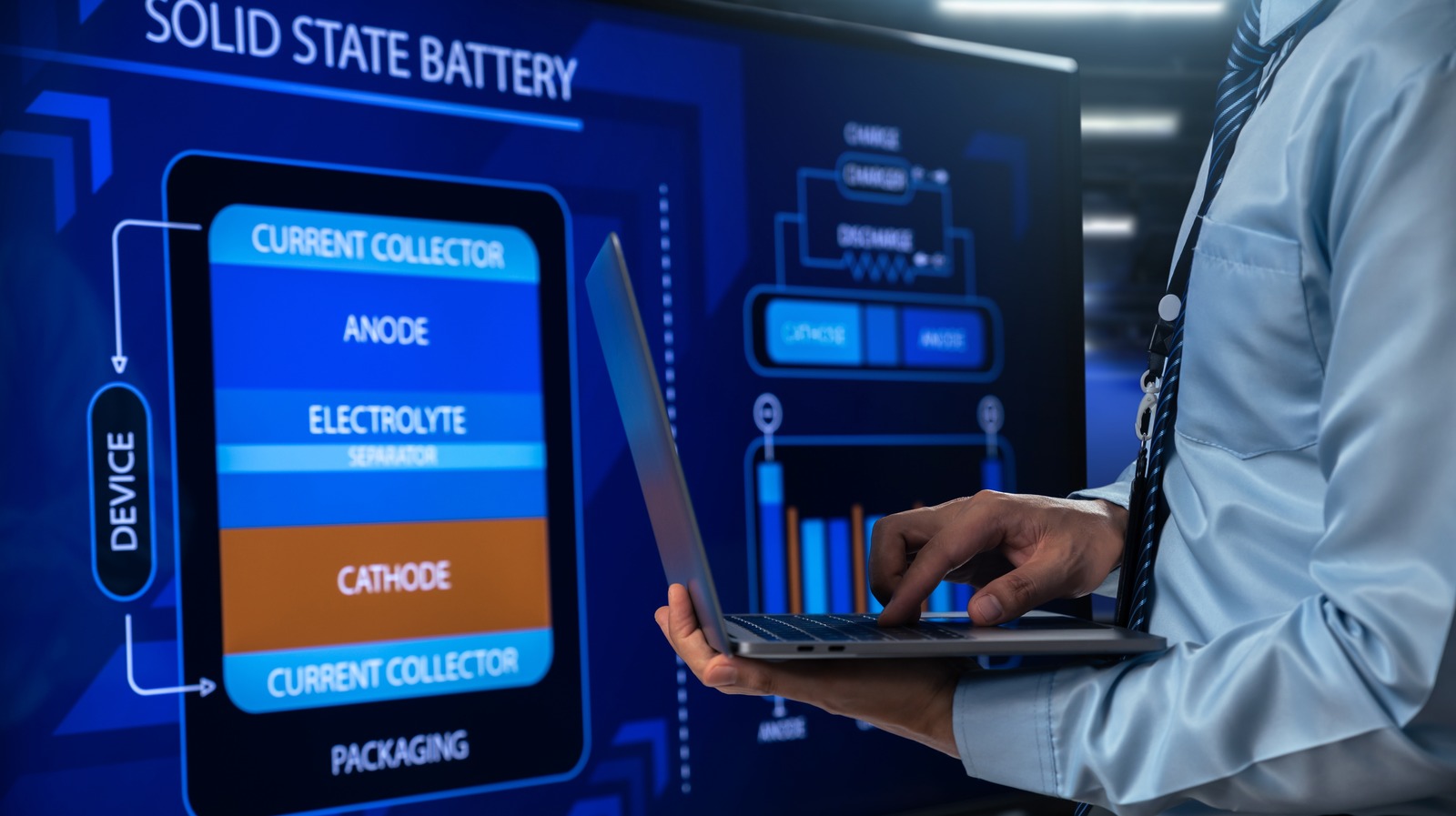Solid State Batteries Explained: What Are They, And How Do They Work? – SlashGear

Lithium-ion batteries power devices by separating both negative and positive currents, and using the movement of lithium ions to create electrons. This connection then sends electricity to the device being charged or powered, between the positive and the negative stores of current.
The electrolytes used in such batteries are in a liquid form to facilitate the movement and the reaction. What a solid-state battery aims to do is produce power using the same process, without the loss of any performance. In effect, these new types of batteries work in the same way, but the solid nature of the electrolyte means that the interior of the battery can be streamlined: No safety measures are required on the inside to contain liquid. What this means is that the potential energy density of a solid-state battery is higher. It can work more efficiently, in short, because more of its interior components are dedicated to functionality alone.
This potential efficiency boost can’t be overstated: In March 2022, MIT News reported that, in removing liquid from the equation, the end result wouldn’t be as volatile should the battery be compromised (such issues with Lithion-ion batteries having caused the infamous Dell laptop recall of 2006). Such a battery could also deliver double the energy of a comparable current one.
It seems as though a solid-state battery will outperform a standard Lithium-ion battery of the same size, then, but there are catches to the new technology.
For all the latest Gaming News Click Here
For the latest news and updates, follow us on Google News.

